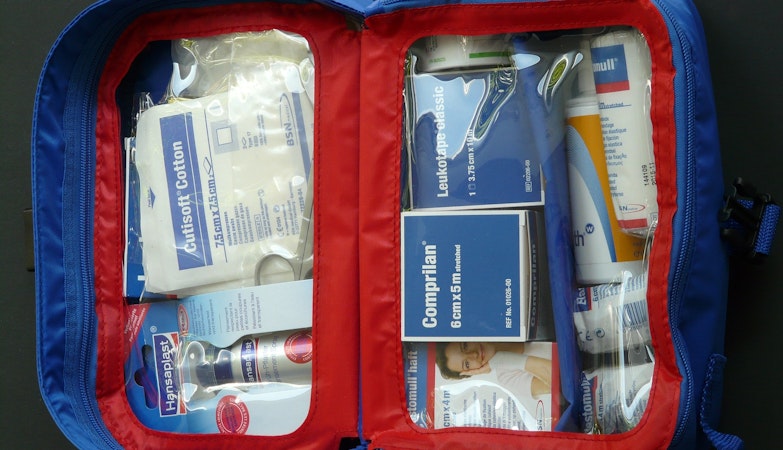I just read a very informative article, (published March 13, 2013 on SHTFPlan.com) regarding the building of an ongoing long-term food storage plan.
The stability of our economy is questionable at best, and the alarming increase of destructive Natural Disasters makes this article quite pertinent, I believe.
As we continue to look forward to preparing for these very uncertain times, I know that it can be difficult to know where to start when it comes to our long-term Food Storage. Perhaps we can glean some new or additional information from this well thought out article.
“One-Year-Pantry”
When planning for emergencies, layering is an ever-constant theme. I often emphasize when one begins to prepare that you start simply by preparing for small-scale emergencies, and then slowly begin adding onto those existing preps to create a longer term preparedness supply. These emergency layers help you create a reliable foundation, and the same layering approach can be used when creating a food storage pantry.
There are some emergency food considerations to keep in mind:
- The amount of people in the household.
- Have a good amount of food varieties to reduce food fatigue.
- The serving size of the food.
- Vitamin content in the food.
- The expiration date or “best if used by” labels on the food.
- Special health conditions for family members.
Your Food Storage Layers
Layer 1 (0- 72-hours)
– In the onset of an emergency and the days following a disaster, the first food to go should be from the refrigerator. Keep in mind that refrigerated food will stay cold for four to six hours, assuming the door is left closed as much as possible. In a fully stocked freezer, foods remain safely frozen for approximately two days if the door stays closed. You want to use up your perishable foods first and then begin preparing your foods that are frozen. Plan meals to meet a 1500-2000 calorie diet that are high in nutrients. Once the perishable food has been consumed, it’s time to move onto your secondary layer of your emergency preps. A word of advice – have an ample supply of water on hand!
Layer 2 (4-30 days)
– These emergency foods should consist of “just add water” meals or meals that do not require substantial amounts of water, fuel or preparation time. Having some canned, pre-packaged dinners, or meals that are “ready to eat” during emergency scenarios will help you begin acclimating yourself to cooking in a grid-down scenario as well as to help provide some comfort at the same time.
Keep your family’s preferences, any existing health conditions and food allergies in mind when preparing this food storage layer. Another thought to keep in mind, is that a large amount of water will be needed to rehydrate some of these meals. Have a large amount of water stored or a means to filter water during an emergency.
Layer 3 (31-99 days)
– I have often said that our preps are our life line. The items we choose should be able to carry us, not only through difficult times, but perhaps through impossible times as well. This layer of pantry foods should consist of multipurpose, everyday pantry items. These foods are relatively inexpensive and easy to acquire. Keep food storage shelf lives in mind and regularly rotate these items in order to maintain a fresh food source. Further, having a fresh source of vitamins will help your body thrive during an emergency. Consider storing a supply of seeds for sprouting – they are cheap, easy to store and require minimal amounts of time for growth.
For those who are preparing for longer term or extended emergencies, at a minimum you should have a 3 month supply of food and build it up to a 6 month supply. This will be the beginning of your longer term food source, and re-packaging these food sources into more durable containers or packages will keep your food’s enemies away. Further it is a good idea to begin storing large quantities of foods that have extremely long shelf lives.
Another method of bulking up on foods with long shelf lives is to invest in freeze-dried foods. These preserved foods have a shelf life of 20+ years! All you need to do is add hot water and voila!
Some foods to consider for longer term storage are:
- Carbohydrates: white rice, pasta, wheat, oats, dehydrated fruits and vegetables, sugars, honey, fruits, roots and tubers (cook these well) and cereals.
- Proteins: legumes, eggs, nuts, peanut butter, canned meats and fish, oatmeal, grains, wheat, quinoa, seeds, MREs, popcorn
- Fats: whole milk, ensure, peanut butter, oil (preferably plant based oils), nuts and seeds
- Vitamins and Nutrients: Vitamin C, Vitamin D, vitamin powders, dehydrated fruits and vegetables, seeds to grow vegetables and for sprouting, survival bars
Layer 4 (100-365 days+)
– If you find yourself in an emergency for over 100 days, it’s time to get real about the situation you have found yourself in. You must assume this could be your new reality. That said it is time to take steps toward long term survival. Having an understanding of essential skills, homesteading and gardening/farming concepts and learning ways to sustain yourself for the long term is of the utmost importance.
Micro livestock is a group of hearty animals that will help you make the most of smaller pieces of land. For those in suburban dwellings, consider chickens, rabbits and fish stored in aquaponic for a long-term food source.
As a prepper preparing for long term emergencies, you want to continue storing up foods mentioned in the last layer and add freeze-dried or dehydrated foods to your stockpile. Given that you are preparing for an extended or long term emergency means that you will also need to begin looking at ways to prepare or preserve food sources off the grid. Learning how to can, dehydrate and ferment foods will help you maintain your food supply. Moreover, to prevent malnutrition, you will want to concentrate on accruing essential food sources such as carbohydrates, protein sources, fats and essential vitamins and nutrients (see above list of food considerations). Having a vitamin source such as sprouting seeds or stockpiling multi-vitamins during this period will also ensure that you are providing your body with regular doses of needed vitamins.
During an emergency, we are often left to fend for ourselves. Having an ample supply of emergency foods can help your family thrive during the most difficult of times. Take the time now to learn how to make the most of your food supply, learn pertinent skills and the importance of balanced diets and the lasting effects nutritious food has on our body because when emergencies occur, we will need this knowledge the most.









